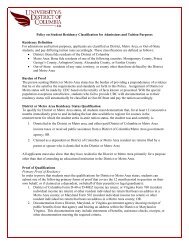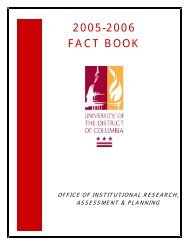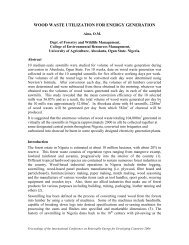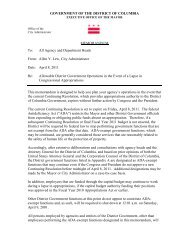Cocos Nucifera: An Abundant Renewable Source of Energy
Cocos Nucifera: An Abundant Renewable Source of Energy
Cocos Nucifera: An Abundant Renewable Source of Energy
You also want an ePaper? Increase the reach of your titles
YUMPU automatically turns print PDFs into web optimized ePapers that Google loves.
<strong>Energy</strong> Conversion Options for Coconuts and their Husks<br />
There are at least three ways that coconuts and their husks can be converted into useful energy.<br />
First, the oil in the copra <strong>of</strong> the coconut can be expelled and used to make coconut bio-diesel to<br />
fuel a diesel generator to make electricity. Alternatively, the coconut oil can be burned directly in<br />
a modified diesel generator. Second, the coconut husk and shell might be used in a biomass<br />
converter to produce combustible gases that can then be used in a gas turbine to produce both<br />
electricity and heat. Third, the coconut shell can be converted to charcoal and combustible gases<br />
to be used in cooking or heating. We will discuss each <strong>of</strong> these options in turn, beginning with<br />
the conversion <strong>of</strong> the energy in coconut oil into electricity.<br />
Producing Electricity from Coconut Oil<br />
The coconut oil is in the copra, or white “coconut meat”, as seen in Figure 3. A typical coconut<br />
will have 0.36 kg <strong>of</strong> copra, including water, meal and coconut oil. Drying removes the 50% <strong>of</strong><br />
the mass that is water, leaving 0.18 kg <strong>of</strong> dry copra, 67% <strong>of</strong> which is coconut oil, or 12kg. The<br />
most efficient extraction that can be done in a village using hand operated presses is 75% <strong>of</strong> this<br />
oil, or 0.09 kg/coconut. Coconut oil has a density <strong>of</strong> 890 kg/m 3 , or .89kg/liter. Thus, 0.1 liter <strong>of</strong><br />
coconut oil can be produced from each coconut. The cost <strong>of</strong> the coconuts and the labor to<br />
process them in a rural village setting in Papua New Guinea is about $0.07/coconut, or<br />
$.70/liter. 1<br />
There are two options for converting the coconut oil into electricity. First one can chemically<br />
process the coconut oil into bio-diesel, using standard procedures such as are used to convert<br />
other vegetable oils into bio-diesel. The process is called transesterification and uses methanol as<br />
a reactant and lye as a catalyst. The mixture is 1:5, methanol to coconut oil, with a yield <strong>of</strong> about<br />
0.8 bio-diesel and 0.2 glycerin, which can be used to make soap. The equipment to make<br />
coconut bio-diesel is inexpensive to purchase and simple to operate. We have run the coconut<br />
bio-diesel in a diesel powered electric generator and it runs extremely well, with about 1/3 rd the<br />
emissions that one gets from conventional petroleum based diesel fuel. No modification <strong>of</strong> the<br />
diesel engine is required. The additional cost <strong>of</strong> processing is about $.20/liter, but the sale <strong>of</strong> the<br />
glycerin should more than compensate for this additional cost.<br />
Figure 4. Equipment to make bio-diesel at Baylor Figure 5. Bio-diesel and glycerin<br />
made at Baylor<br />
Proceedings <strong>of</strong> the International Conference on <strong>Renewable</strong> <strong>Energy</strong> for Developing Countries-2006

















